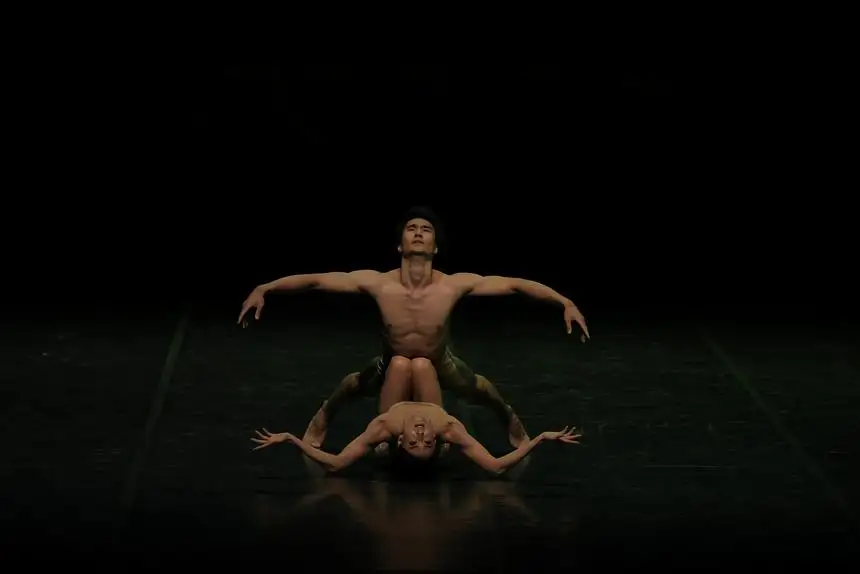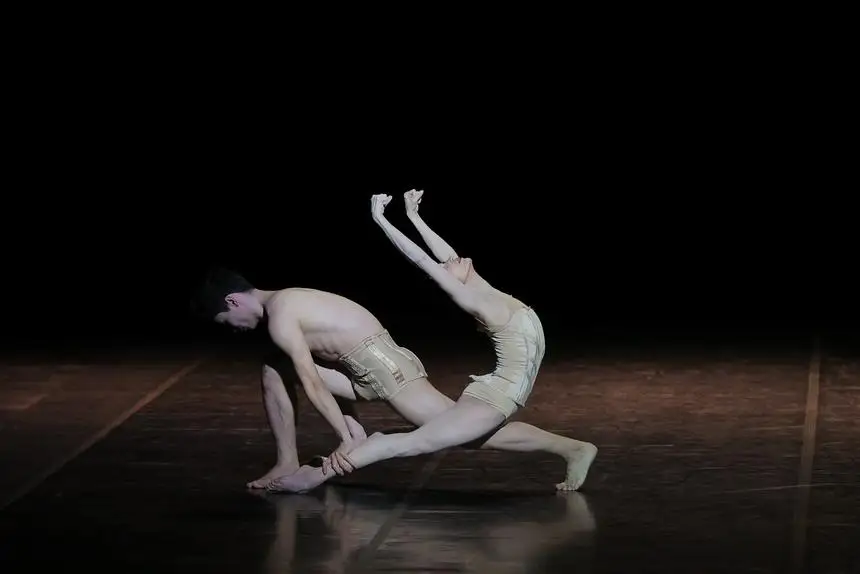To Die to Be Reborn: The cult ballet premiered in Kazakh capital

The twin ballets Petite Mort and Sechs Tänze to Mozart’s brilliant music have finally reunited. Last year, the cheerful production of Sechs Tänze was added to the opera house’s repertoire, and in the anniversary season the ballet company took on another masterpiece by Jiří Kylián – Petite Mort. The artistic director of the Astana Opera Ballet Company Altynai Asylmuratova invited the capital’s audience to get acquainted with Kylián’s work of the 90s, a series of Black and White Ballets. During this period the famous choreographer developed a special style, thanks to which Jiří Kylián began to be called a ballet master – philosopher, Kazinform learnt from Astana Opera’s Press Office.

Petite Mort is one of the few modern ballets that have already fallen into the category of popular classics. It is extravagant, full of fascinating choreographic ideas, with a rich palette of emotions, and it has surrealistic and abstract themes. The production was made with such freedom that it was destined for audience success, and this was confirmed by a two-day premiere in the capital.
It should be noted that all the dancers did an excellent job with the tasks set to them by Stefan Żeromski, Jiří Kylián’s assistant. The complex choreography with its inherent filigree synchronicity and graceful frankness of forms of expression was brought to life by the performers with clear precision. What is most important in this ballet, they were able to convey the uninhibited movements set by the master in the dance.
The Kazakh ballet company plunged headlong into a ballet about life and a broad range of human relationships: from sublime and sensitive to carnal and passionate.

Of course, one cannot fail to notice the high professionalism of the company’s male dancers, who handled rapiers with such dexterity, with the swords at times replacing partners for the dancers, that it seemed as if one was not at the opera house at all, but at a fencing tournament, where complex and breathtaking tricks were demonstrated. The beginning of the ballet drew the viewers in and carried them away with the perfect clarity of movements combined with a simultaneous sense of rhythm, and all this happened onstage without music.
Suddenly, the sound of Mozart’s amazing melodies started pouring in. Mass dances smoothly, almost imperceptibly for the audience, flowed into six adagios, which differed significantly from each other. Designer Joost Biegelaar implemented the idea of the transition from one scene to another in the form of a huge canvas. With undulating movements, it hid the entire stage, and as soon as it disappeared, new pairs of dancers emerged from under it.
Duet No. 1 was sensually performed by Yevgeniy Rybkin with Kamila Ormanova and with Gulnaz Zhanayeva on different days. The performers of the second duet, Sofiya Adilkhanova, Ruslan Kanagat, Bakhytgul Ispanova, Islam Kaiypbai demonstrated amazing body plastique. The company’s prima ballerinas were entrusted to perform a difficult third duet, which Aigerim Beketayeva danced with Daniyar Zhumatayev, and Shugyla Adepkhan with Arman Urazov. Without exaggeration, the dancers handled their task masterfully.

Another pair of brilliant soloists, Madina Unerbayeva with her partner Serik Nakyspekov, presented the fourth duet, lining up every movement and imbuing the dance with frantic passion, which gave the modern choreography the most vivid colors. Anastasia Zaklinskaya, Galymzhan Nurmukhamet, Moldir Shakimova, Dias Kurmangazy took the stage in the fifth duet. The dancers have good classical training, and it was not difficult for them to adapt to the new style, especially since some of them have already worked with Kylián’s choreography. Yerkezhan Zhunussova, Zhanibek Akhmediyev, Assel Shaikenova and Olzhas Tarlanov wonderfully performed the final sixth duet.
The performance complexity lay in the incredible musicality of the ballet, where the dancers’ bodies had to respond to every note. It was imperative that they were not late even for a second with each movement. Every duet is based on a certain piece of music, some shorter, some longer, but the emphasis is on the bewitching clarity of lines and the dancers’ mastery of their bodies. The choreographer literally «saw» the music, understood it, which is how such inventiveness of forms was born.
Everyone was also impressed by the bright scenes with ballerinas hiding behind luxurious black gowns that moved on wheels. However, as it turned out, the panniers only hid the dancers’ main costumes – flesh-colored corsets. The soloists moved so gracefully in them that the dance acquired a kind of meditativeness and lost all physicality. Using the language of plastique, masterfully set to Mozart’s timeless music, Kylián spoke to the audience about the immortality of art.

It seemed that the young music director and conductor of the production Elmar Buribayev at the helm of the Astana Opera Symphony Orchestra helped to convey to the audience the deep philosophical meaning of each note, embedded by the composer in the musical and orchestral canvas. The orchestra sounded deep and pure, the Maestro and musicians were at their best, as was the pianist Dolores Umbetaliyeva, who lyrically keenly performed the solo piano part.
In a word, the entire team soared in the free flight of creativity, turning to Mozart’s philosophy and Jiří Kylián’s ballet aesthetics. Only the thunderous applause from the audience brought the dancers back to reality, and again and again the performers were called back to bow and smile in response to the cries of «Bravo!»